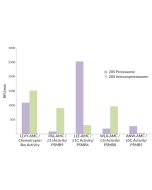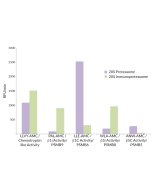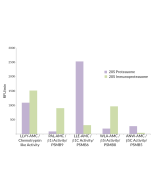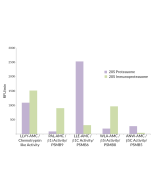Cookie Policy: This site uses cookies to improve your experience. You can find out more about our use of cookies in our Privacy Policy. By continuing to browse this site you agree to our use of cookies.
SouthBayBio
26S Proteasome (human) (untagged)
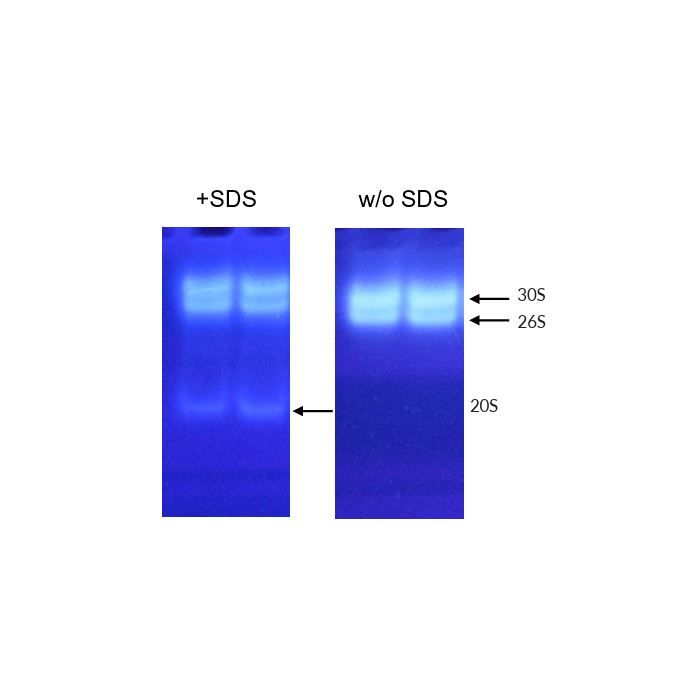
| Product Details | |
|---|---|
| Product Type | Protein |
| Properties | |
| Source/Host | HEK 293 cells |
| Sequence |
Human 26S Proteasome. |
| Crossreactivity | Human |
| Application |
This product can be used in vitro for the degradation of peptide substrates and polyubiquitinated proteins. A typical working concentration range is from 2.5 to 5 nM. |
| MW | >2100 kDa |
| Purity | ≥95% (SDS-PAGE) |
| Concentration | 0.4 μM, 0.85 mg/ml (Lot dependent). |
| Formulation | Liquid. In 50mM HEPES pH 7.5, 20mM NaCl, 2mM Mg-ATP, 10% Glycerol. |
| Other Product Data |
Click here for a Typical Lot-specific Product Datasheet from the Original Manufacturer |
| Declaration | Manufactured by South Bay Bio. |
| Shipping and Handling | |
| Shipping | DRY ICE |
| Short Term Storage | -80°C |
| Long Term Storage | -80°C |
| Handling Advice | Aliquot to avoid freeze/thaw cycles. |
| Use/Stability | Stable for at least 1 year after receipt when stored at -80°C. |
| Documents | |
| Product Specification Sheet | |
| Datasheet |
 Download PDF Download PDF |
The 26S Proteasome is the major nonlysosomal protease in eukaryotic cells and is responsible for the degradation of ubiquitinated substrates and misfolded proteins. It is composed of two subcomplexes: the 20S Proteasome core particle and the 19S Proteasome regulatory particle. The 20S Proteasome facilitates proteolytic cleavage of protein substrates and is composed of 28 subunits arranged into four stacked rings. The outer rings of the 20S Proteasome are composed of seven related but nonidentical, noncatalytic subunits, alpha17, that form a gate and restrict substrate access. The inner rings of the 20S Proteasome are composed of seven related but nonidentical subunits, beta 1-7. Beta 1, 2, and 5 have proteolytic activity. The 19S Proteasome caps one or both ends of the core particle and regulates substrate access to the catalytic core in an ATP-dependent manner by modulating 20S Proteasome conformation. The 19S Proteasome consists of a base subcomplex and a lid subcomplex. The base subcomplex is composed of six AAA+family members, scaffolding proteins, and regulatory proteins involved in Ubiquitin recognition. The 19S Proteasome lid subcomplex contains eight subunits plus one deubiquitinating enzyme, Rpn11. Small molecules that inhibit the activity of the 26S Proteasome are used to study the function of short-lived intracellular proteins and for the clinical treatment of certain forms of cancer. This highly purified 26S Proteasome preparation can be used in vitro for the degradation of peptide substrates and polyubiquitinated proteins.






